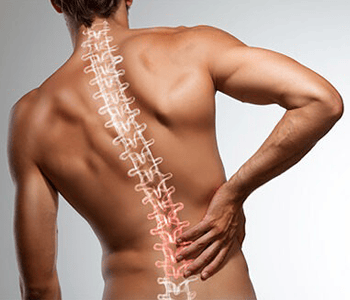Spinal Arthritis / Osteoarthritis | Arthritis of Spine Treatment in Gurgaon
The most prevalent type of arthritis that affects the back is Spinal Arthritis / Osteoarthritis. It can happen anywhere on the spine. The low back and even the neck are usually impacted.
The cartilage around the joint wears down in Osteoarthritis or Spinal Arthritis, causing the bones of the joint to grind together, producing inflammation and pain.
Spinal osteoarthritis can cause loss of flexibility, bone spurs (osteophytes), inflamed nerves, spinal stenosis, and sciatica.
Spinal arthritis causes stiffness and pain in the lower back. The stiffness is worse in the morning, improves with activity, and then increases toward the end of the day. This is most likely due to fluid buildup in the joint as a result of inactivity overnight, which produces more swelling.

Back/Spine Arthritis Symptoms
The following is a common pattern of low back discomfort caused by facet joint arthritis:
- Because the pain runs down the leg, people, including doctors, frequently confuse it with nerve root pain.
- As the person goes about his or her daily activities, the pain normally subsides to a more manageable level.
- In the evening, pain and stiffness tend to worsen.
- Sleep-disrupting pain is frequently an indication of osteoarthritis.
- Loss of joint flexibility, such as the inability to bend and pick something up off the floor.
- A crunching sensation or sound of bone scraping against bone as the joint is moved (called crepitus), which is most noticeable in the neck.
Back/Spine Arthritis Causes
Spine Arthritis has an unknown cause. SPINE ARTHRITIS is caused by a variety of reasons, including:
- Age: The older you are, the more likely you are to have SPINE ARTHRITIS.
- Weight: Overweight people are more likely to suffer SPINE ARTHRITIS.
- Stress: Joint strain from work or sports can raise your risk.
- SPINE ARTHRITIS can be caused by a back injury.
- Family history of SPINE ARTHRITIS: Some persons have a family history of SPINE ARTHRITIS.
Diagnosing SPINE ARTHRITIS
Your doctor will talk with you and examine your body to see if you have SPINE ARTHRITIS in your back. They will almost certainly order an X-ray to search for damage to your spine's joints. Blood tests may also be ordered to rule out other diseases. In some circumstances, a CT scan or an MRI may be requested.
SPINE ARTHRITIS TREATMENTS
The damage produced by SPINE ARTHRITIS is irreversible. The treatment focuses on relieving pain and keeping you mobile.
Non-Medical Treatments
- Lose weight (if necessary) to relieve back pain.
- Alter your activities to ones that are less taxing on your back.
- Attend physical therapy to strengthen your muscles and enhance your capacity to move your spine.
- For pain alleviation, try acupuncture or massage.
Medication Treatments
- Nonsteroidal anti-inflammatory medications (NSAIDs) for pain relief.
- For short-term relief, steroids can be injected into the back.
Surgical Procedures
If non-surgical treatments do not relieve your symptoms, a surgical procedure may be required. Many of these treatments can now be performed using a minimally invasive approach known as arthroscopy, thanks to developments in spine surgical techniques. However, for some people, open surgery may be required for the best possible outcome. Before scheduling the procedure, your spine surgeon will go over your alternatives with you.
Spinal Cord Decompression Surgery is one type of surgical technique. Severe spine arthritis can sometimes cause compression of the spinal cord and nerves, resulting in pain, numbness, and limited range of motion. Decompression surgery, also known as a laminectomy, involves the removal of a piece of a vertebra (lamina) to relieve pressure on the spinal cord and free up nerve roots. Multiple vertebrae may require decompression at times.
Fusion of the spine. This treatment, which is frequently performed utilizing minimally invasive surgery, fuses or unites two or more spinal vertebrae together. This procedure is performed to address spinal weakness or instability caused by severe spine arthritis.

